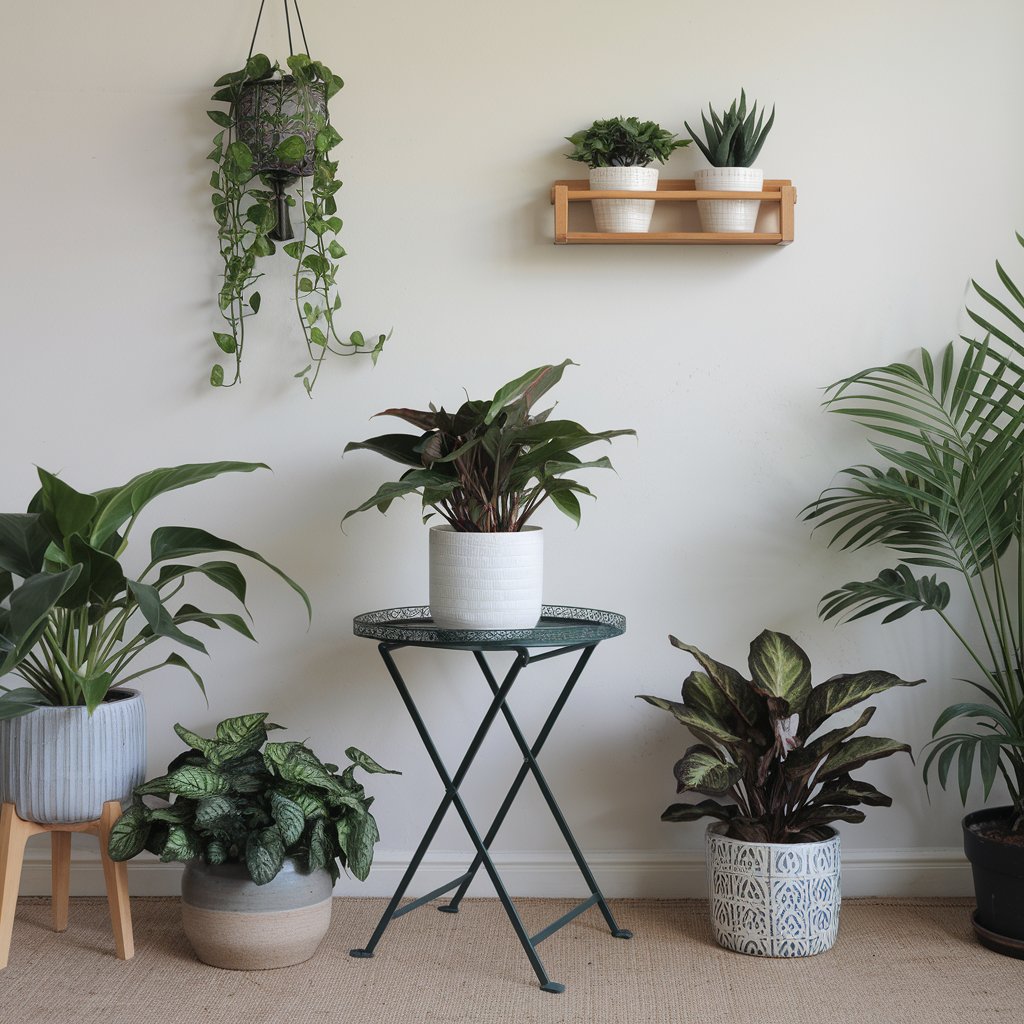The Kalanchoe plant is a perfect choice if you’re looking for a vibrant, low-maintenance plant to brighten your indoor space. With its colorful blooms and unique succulent foliage, this plant is a favorite among houseplant enthusiasts. Not only is the Kalanchoe visually appealing, but it’s also remarkably easy to care for, making it an ideal plant for beginners and seasoned gardeners alike.
Let’s dive into everything you need to know about Kalanchoe plant care, including its varieties, propagation, and how to keep it thriving indoors.
What is a Kalanchoe Plant?
The Kalanchoe plant belongs to the succulent family Crassulaceae and is native to Madagascar. Known for its fleshy, water-retaining leaves and long-lasting blooms, the Kalanchoe is a symbol of endurance and resilience.
There are many Kalanchoe plant varieties, but the most popular for indoor gardening include:
- Kalanchoe blossfeldiana: The most common variety, known for its clusters of small, brightly colored flowers.
- Kalanchoe calandiva: A double-flowered variety with lush, rose-like blooms.
- Kalanchoe panda plant (Kalanchoe tomentosa): Recognized for its fuzzy, silver-green leaves with brown tips.
- Kalanchoe pinnata: Also called the “Miracle Leaf” for its medicinal properties and unique ability to propagate from leaf margins.
Why Choose a Kalanchoe Plant for Indoors?
- Stunning Blooms: The Kalanchoe produces flowers in shades of red, pink, yellow, white, and orange, which can last for weeks.
- Low Maintenance: Like most succulents, it’s drought-tolerant and requires minimal attention.
- Compact Size: Its manageable size makes it perfect for small indoor spaces, from windowsills to desks.
- Air Purification: While primarily decorative, the Kalanchoe contributes to cleaner air in your home.
How to Care for a Kalanchoe Plant Indoors
1. Light Requirements
Kalanchoe plants love bright, indirect sunlight. Place them near a south- or west-facing window where they can receive 4–6 hours of light daily. Too much direct sunlight can scorch the leaves, while too little light may prevent flowering.
2. Watering Needs
- Frequency: Allow the top 1–2 inches of soil to dry out between waterings. Overwatering can cause root rot, a common issue for succulents.
- Seasonal Adjustment: During winter, reduce watering as the plant enters a dormant phase.
3. Soil and Potting
- Choose a well-draining cactus or succulent soil mix to avoid water buildup.
- Potting: Ensure your pot has drainage holes to avoid waterlogging. Terracotta pots are ideal since they help moisture escape naturally.
4. Temperature and Humidity
- Temperature: Kalanchoe plants thrive in temperatures between 60–85°F (15–29°C). Avoid placing the plant near cold drafts or heating systems.
- Humidity: They prefer low to moderate humidity, making them perfect for most indoor environments.
5. Fertilization
Feed your Kalanchoe plant every 4–6 weeks during the growing season (spring and summer) with a balanced, water-soluble fertilizer. Avoid fertilizing in winter.
How to Encourage Blooming

Kalanchoe plants are known for their striking flowers, but they require the right conditions to bloom:
- Control Light Exposure: Kalanchoe is a photoperiodic plant, meaning it needs a period of darkness to trigger blooming. Ensure the plant gets 12–14 hours of uninterrupted darkness nightly for around six weeks.
- Pruning: After the flowers fade, trim the spent blooms to encourage new growth.
- Balanced Care: Ensure the plant receives sufficient light, water, and nutrients.
Propagating Kalanchoe Plants
Propagating from Cuttings
- Choose a Healthy Stem: Select a stem with at least two leaf nodes.
- Prepare the Cutting: Cut just below a node and let it air dry for 1–2 days to form a callus.
- Plant the cutting in soil with good drainage and water sparingly.
- Root Development: Keep the soil slightly moist until roots develop, usually within 2–3 weeks.
Propagating Kalanchoe Pinnata
The Kalanchoe pinnata plant is unique because it can propagate from leaf margins. Simply place a healthy leaf on moist soil, and tiny plantlets will grow along the edges.
Common Problems and Solutions
1. Yellowing Leaves
- Cause: Overwatering or poor drainage.
- Solution: Allow the soil to dry out before watering and ensure proper drainage.
2. Wilting or Drooping
- Cause: Underwatering or root rot.
- Solution: Adjust your watering schedule based on soil moisture.
3. Lack of Flowers
- Cause: Insufficient light or improper photoperiod.
- Solution: Move the plant to a brighter location and follow the dark-light cycle for blooming.
4. Pests
Kalanchoe plants are occasionally prone to pests like mealybugs and aphids.
- Solution: Remove pests with a cotton swab dipped in rubbing alcohol or use neem oil spray.
Decorating with Kalanchoe Plants Indoors
- Table Centerpieces: Place a blooming Kalanchoe in a decorative pot for a stunning focal point.
- Windowsills: Line up multiple Kalanchoe plants in different colors for a cheerful display.
- Terrariums: Combine Kalanchoe with other succulents in a glass terrarium for a modern touch.
- Hanging Planters: Use trailing varieties like Kalanchoe tomentosa for hanging baskets.
FAQs About Kalanchoe Plants
1. Are Kalanchoe Plants Toxic to Pets?
Yes, Kalanchoe plants are toxic to cats and dogs if ingested, causing vomiting and diarrhea. Keep them out of reach of pets.
2. Can Kalanchoe Plants Be Grown Outdoors?
While primarily grown indoors, Kalanchoe plants can thrive outdoors in warm, frost-free climates.
3. How Long Do Kalanchoe Blooms Last?
The flowers can last for several weeks to a few months, depending on the care provided.
Final Thoughts on the Kalanchoe Plant
The Kalanchoe plant is a true gem for indoor gardeners, offering stunning blooms, easy care, and endless charm. Whether you’re drawn to the colorful Kalanchoe blossfeldiana, the quirky Kalanchoe panda plant, or the medicinal Kalanchoe pinnata, there’s a variety for everyone.
With the tips in this guide, you’re well-equipped to grow and care for your Kalanchoe plant. So, bring home this vibrant beauty, and enjoy its cheerful presence in your indoor garden. 🌿
Looking for more tips on creating a colorful indoor garden? Visit Indoor gardening for expert advice and inspiration.




